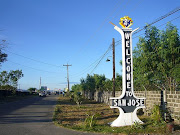Due
to recent incessant rain which results to flooding in various municipalities of
Occidental Mindoro, the necessity of addressing the problem in a long-term
basis is very much needed. Interventions regarding environmental and water resources engineering can also be employed.
On
its 94th Regular Session, the Sangguniang Panlalawigan evaluated the
damage to properties and agriculture brought about by these flooding. The
Provincial Engineering Office pegged the total damages on provincial road and
bridges in the amount of P42,240,000.00. In that particular outing, agricultural
damages is estimated at P398,364,963 Million broken down as follows: Rice
P223,000.744.00, Corn P18,044,200.00, High Value Crops P17,275,819.00,
Fisheries P122,000,000.00. The Office of the Provincial Agriculturist issued a
report that the most damaged towns are Sablayan, Magsaysay, Sta. Cruz, Rizal,
San Jose and Abra de Ilog.
Overall,
the country’s total forest cover went down by 4.59% from 2003 to 2010. MIMAROPA
had the biggest drop among all regions. And in the region, the whole Mindoro
Island has the highest decrease in forest cover. Oriental Mindoro has 61.03%
decreases and in Occidental Mindoro, the number is 53.62%. Aside from logging,
both legal and illegal, according to authorities the problem is also
attributable to charcoal-making and kaingin
(swidden farming). The Mangyans are truly engaged in such an economic
activity but not all kaingin are
destructive, as far as I know. The problem is that majority of our indigenous
peoples espoused the practice of the low-landers throwing the ethnic or
cultural ways of doing it. Kaingin farming,
also known as shifting cultivation or rotational farming, is a type of accepted
sustainable agroforestry system. It is a customary livelihood common across
indigenous communities in Asia. In fact, the United Nations Framework on
Climate Change (UNFCCC) explained that shifting cultivation among ethnic groups
is not a major cause of
deforestation in countries across the region.
But
also consider this: only in May this year, the Manila Standard reported that
the DENR-MIMAROPA has approved the cutting of 10,9045 trees standing inside the
gigantic Amnay Watershed listed by the department itself as a “critical
watershed area.” As we people of Mindoro know, Amnay River is one of Mindoro’s prime
rivers that provides irrigation to Sablayan’s five top rice-producing barangays,
namely, Claudio Salgado, Lagnas, Elvita, Pag-asa and Victoria, which are all
flood-prone barangays. Said communities are most hit in the recent flooding
brought about by TS Josie in said municipality. Six persons died in the
incidents of flooding in the province. TS Josie causes us P400M damage in agriculture
sector, according to reports.
The
provincial government and the rest of the municipal LGUs did all they can in
the area of relief by way of responding in rescue and other measures in their
respective areas of jurisdiction. They all exerted efforts in helping the
evacuees, launching relief and rescue operations and medical missions and distributing
goods to evacuees and victims. They also requested other forms of
subsidies and assistance for the farmers and fisherfolk from the DA. But we
lack the forward-looking plans on flood mitigation and we focus more on reactionary
measures rather than pro-active ones.
If
you are living the urban centers of the province, it is easy to blame our
poorly designed, clogged or lack of drainage system. But I think drainage or
land cover cannot be blamed alone. Generally, the problem must be traced to
geography. We all know that most populated parts of municipalities of
Occidental Mindoro are positioned in an area next to a river that is swamped
when water rises. A land so fertile and suitable for agriculture but when transformed, converted or re-used to residential or commercial areas, it became prone to floods. In
areas situated near creeks and rivers, even the most well-maintained and
well-constructed drainage system would be hopeless during heavy rains and high
tides when rivers overflow. As of this posting, there are still incidents of flash floods in some downtown of the province.
The
LGUs have no other choice but to strictly enforce 10-20 meter easements along rivers and
lakes, and 3.5 meter easements along creeks and esteros. Retrofitting
government facilities against flood waters must incorporate our short-term goal.
Massive reforestation of the catch basins and watersheds must also be started and
sustained.
In
general, spillways and floodways must be built in flood-prone areas of every
target municipality. A certain lake or low-lying area will act as initial
floodwater container and another one nearby as secondary container. When major
rivers reach critical levels, its excess water is diverted to the designated
initial floodwater container to the secondary container to protect the
barangays near the rivers.
One
may immediately design a construction or master plan project similar to this.
Since this is a long-term target, we need not less than 15-25 years to finish
or at least gain or see initial outcome of this. I heard that the World Bank,
through the Global Facility for Disaster Reduction and Recovery Trust Fund could
help us formulate or fund, say, a 25-year Occidental Mindoro Flood Management
Master Plan. Malay natin.
I am not an engineer and is in no way an expert in urban and rural planning but these are just product of my little readings on flood control measures by governments here and elsewhere. I believe with sufficient fund and resources from the national government and outside funding with the will and dedication on the part of the implementors, this is very possible.
I am not an engineer and is in no way an expert in urban and rural planning but these are just product of my little readings on flood control measures by governments here and elsewhere. I believe with sufficient fund and resources from the national government and outside funding with the will and dedication on the part of the implementors, this is very possible.
It
is now high time to think beyond the canals, drainages and gabions. As a short-time goal, we need to construct road dikes along our flood-prone rivers
and relocate settlers to higher areas if necessary so it is but proper to
establish relocation areas if there is a need for relocation. But it’s time to
turn to a more lasting solution or mitigation. Along with long-term plans on
urban development, it is now time to start (re)thinking of a province-wide flood
control mechanisms to effectively contain and channel floodwaters in certain parts of municipalities of the province. The provincial government can now initially
conduct a study on such a grand project I am discussing above. We have experts to give flesh and bone on this I am sure.
Visionary
leadership, good planning and design and good governance would surely ensure our success against this impending “Water World” situation….
--------
Photo: news.abs-cbn.com
References:







No comments:
Post a Comment